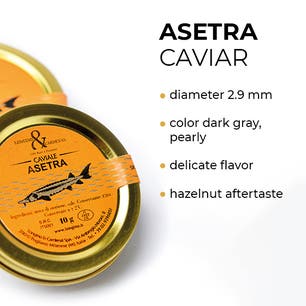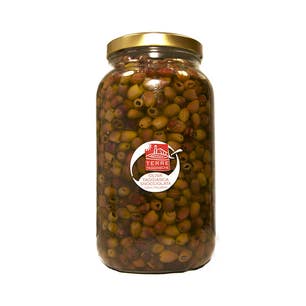Types of Tuna
BLUEFIN TUNA
An underwater journey to discover the types of tuna
Sometimes, we get lost in the wide universe underwater, especially when it comes to understanding the different types of fish. In this case, let's take a closer look at one fish specifically: tuna. And we're not just talking about any kind of tuna, but we're going to explore different species: bluefin tuna, yellowfin tuna, and albacore tuna. Each of them has something unique to offer, both in terms of flavor, nutrition, and ecological value. Are you ready for an underwater adventure? Jump on board!
Different species of tuna are found in all the world's seas and oceans, from tropical to subarctic waters. Their habitat varies by species. For example, bluefin tuna prefer the cold waters of the Atlantic and Mediterranean, while yellowfin and albacore tuna are more common in the warm waters of the Pacific.
The tuna is a large fish with a strong body, perfectly adapted for fast and powerful swimming. Its skin is smooth and it has two dorsal fins.
One of the most striking features of the tuna is its ability to keep its body temperature higher than that of the surrounding water, a unique characteristic among fish. The tuna is a voracious predator that feeds mainly on other fish and squid. Because of its speed and agility, it is able to catch its prey with great efficiency.




The Bluefin Tuna: The Giant of the Sea
Bluefin tuna, or Thunnus thynnus, is one of the largest and most sought-after species of fish in the ocean. Due to its superior quality meat and distinctive color, this giant of the sea is highly prized by gourmets around the world.
Bluefin tuna can reach impressive sizes, with specimens exceeding 3 meters in length and 680 kg in weight. It prefers the cold waters of the Atlantic and Mediterranean. Despite its size, it is an incredibly agile and fast swimmer, capable of traveling long distances in search of food.
Bluefin tuna is rich in nutrients essential to our health. It is an important source of high-quality protein, B vitamins, vitamin D, selenium and magnesium. Like other types of tuna, it also contains Omega-3 fatty acids, which play a key role in maintaining heart and brain health.
Bluefin tuna is highly valued in Japanese cuisine, where it is often used to make sushi and sashimi. However, its firm, flavorful flesh also lends itself to a wide range of other culinary preparations. It can be grilled, roasted, or steamed, and its richness of flavor makes it an excellent match for a variety of seasonings and spices.
Unfortunately, the popularity of bluefin tuna has led to overfishing and a decline in its populations in some areas. To protect this species and the marine ecosystem, it is critical to choose bluefin tuna from sustainable sources.


Yellowfin Tuna: The Blue Treasure of the Ocean
Yellowfin tuna, also known as Thunnus albacares, is a fascinating species beloved by foodies around the world. This species, with its distinctive yellow dorsal fin, is a true treasure of the world's warm seas.
Native to the warm waters of the Atlantic and Pacific Oceans, yellowfin tuna are pelagic fish known for their endurance and speed. They are quick hunters that feed mainly on other fish and squid. They can reach a length of more than 2 meters and weigh up to 200 kg, although most fish caught for food consumption are much smaller in size.
Yellowfin tuna is not only delicious but also offers numerous health benefits. Rich in high-quality protein, it is an important source of B vitamins, vitamin D, and minerals such as selenium and magnesium. In addition, it is a valuable source of omega-3 fatty acids, known for their anti-inflammatory and cardioprotective properties.
The slightly sweet flavor and tender texture of yellowfin tuna make it a versatile ingredient in cooking. Yellowfin tuna also lends itself to marinating and pickling in oil, offering a multitude of possibilities to delight the palate.
Global demand for yellowfin tuna has led to overfishing in some regions. Seeking products that carry the Marine Stewardship Council (MSC) label can ensure that the yellowfin tuna you consume comes from fishermen who follow responsible and sustainable fishing practices.


The Albacore Tuna: The Nomad of the Ocean
Albacore tuna, also known as Thunnus alalunga, is a migratory fish distinguished by its long pectoral fins. This resident of the Atlantic and Pacific oceans is one of the world's most prized varieties of tuna because of its delicate flavor and tender texture. Albacore tuna are deep-sea creatures and prefer to live in colder waters than the other two types of tuna. They move in large groups and are known for their incredible migratory abilities, being able to travel thousands of kilometers in search of food and for breeding. Rich in protein and low in fat, albacore tuna is an excellent choice for a healthy, balanced diet. It is a good source of B vitamins, vitamin D, and minerals such as iron and magnesium. It also contains omega-3 fatty acids, which are essential for heart and brain health.
Albacore tuna is highly valued for its mild flavor and soft texture. This fish lends itself to a wide variety of preparations, from simple canned tuna to sophisticated seafood salads. It is perfect for marinating, grilling, or steaming, and goes well with a wide range of spices and seasonings. Although albacore tuna is not currently considered endangered, overfishing is a problem that threatens many tuna populations. For this reason, it is important to make informed choices when purchasing tuna.
Discover the products and pairings
Longino & Cardenal
Longino & Cardenal stands today as one of Italy's leading "food globetrotters." With passion and courage it carries out a continuous search for the best raw materials, often little known to most, in order to meet the new trends in consumer behavior that seek excellent products proposed in innovative forms. Delivery of products is expected in 48/72 hours from the order if the product is already in stock. All our deliveries use specialized, refrigerated couriers.











